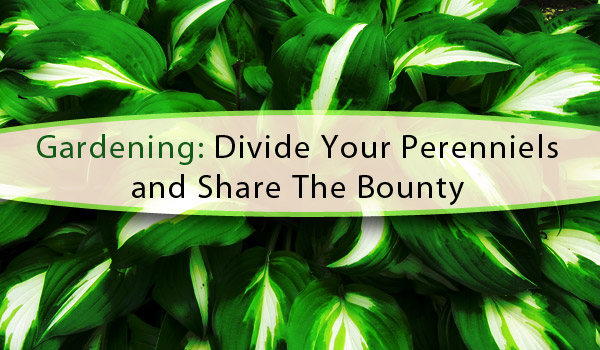Gardening: Divide Your Perenniels and Share The Bounty
Cary, NC — It’s been a cool, wet summer in Cary and my garden beds are bursting with plants that are getting quite large. That’s a good thing because, in the coming months, I can take this bounty and divide it to spread the plants around to new places–and maybe even share them with some gardening friends.
A perennial is a plant that comes back every year (you know, perennially), as opposed to an annual that blooms all summer but then dies a good death and must be replaced the following year with a new plant (as opposed to when you kill a plant that must then be replaced).
That said, I have beds full of Liriope, Pony Tail grass, Day Lilies, Candy Tuft, Veronica, Cone Flowers, and Canna Lilies that could use a little cutting back before they take over my yard. Rather than just cut them back or yank them out, I will dig them up, divide them, and replant in new areas.
The process is very simple.
The Right Time of Year
In Cary, wait until Fall to replant (in the North you can do this in early spring, but we can hit a dry spell, and that means lots of work). In October and November, this area of the Piedmont usually gets plenty of rain.
Your plants are heading into their dormant phase when they no longer expend their energy producing leaves or flowers and instead begin to work underground, absorbing dead matter to create a healthy root system.
This works to your advantage when you divide, as your plants will already want to be producing new root shoots and will be eager to get established in their new location.
What You Need
A big plant, (potted or in the ground), a good metal shovel, a spade, pruning shears, gardening gloves, soil and mulch.
How To Divide Your Plants
Once you find the plant you want to work on (something firmly established in its location), make sure it has finished its flower producing season. It will probably have dead flowers and dying leaves on it, as the plant is preparing to go dormant for the winter.
Make sure your shovel and tools are clean. Why? So that any fungus or disease from one plant does not spread to the new ones you are creating.
Water the area if the soil is dry. This will make digging up the plant much easier.
With your shovel, dig a nice healthy hole around the plant at its drip line. Dig around until you can safely lever the plant out of the hole without disturbing its root system.
Pull it completely out of the ground. Shake off any loose soil so that you have a good look at the root ball. Depending on how big the plant is, you may wish to divide it into 2, 3 or 4 smaller plants. That is your preference depending on the type of plant and where its going to be planted. Also, if it is a fast growing plant, you can make your new plant-lets small to start with.
Take the pruning shears and start to make cuts from the bottom of the root ball upwards. Be aggressive, as plants are tough! Finish any dividing with the spade and pull apart your new smaller plants. Shake off loose soil.
Planting the New Plants
In the new location, dig a hole that is twice the size of the new root ball and just as deep as the top of the root ball. Place the plant in the newly dug hole, and begin to fill all around with soil, mounding the dirt toward the stems. Top this with a healthy layer of mulch (1-3 inches). Water your plant well to establish the roots. Remember, the plant is working underground to get a nice start for next year. Mulching will help the plant retain water and will also provide degrading plant matter that will feed roots.
NOTE: You can do the same division with bulbs if you already located those needing to be split up earlier in the year. Just dig up the bulbs, physically pull them apart or cut them, and you will have twice as many new flowering bulbs coming up next spring. This also is beneficial to plants that may be getting crowded in their current location. By dividing and spreading them out, you allow the roots to spread out and grow, ultimately leading to healthier plants that aren’t competing against each other for water, soil, and nutrients.
Happy Planting!
———————————————————————————————————————-
Story by Lindsey Chester. Hosta photo by John.
———————————————————————————————————————-
The Gardening column on CaryCitizen is sponsored by Garden Supply Company on Old Apex Road in Cary.




Comments are closed.